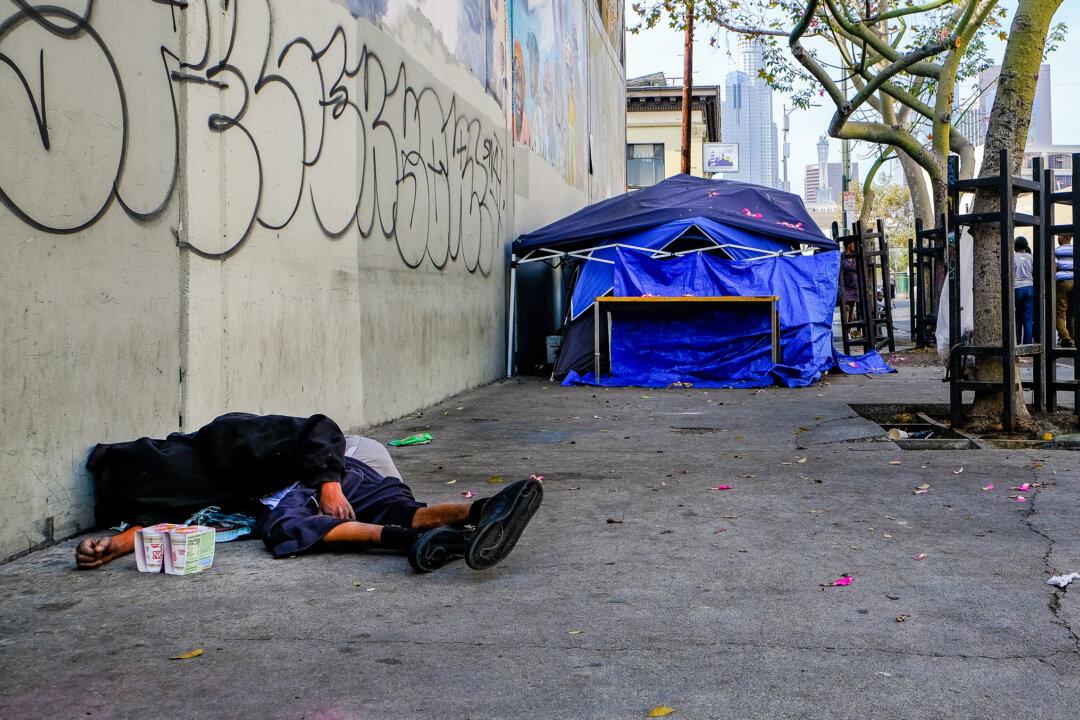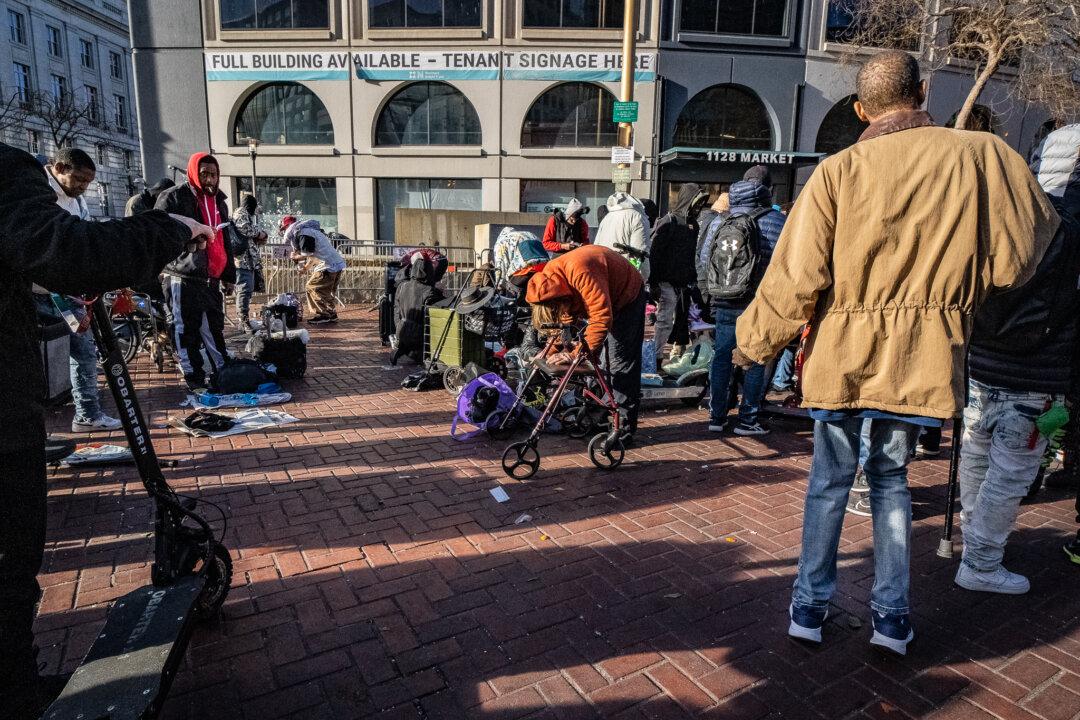LOS ANGELES—The number of homeless deaths in Los Angeles County increased over 50 percent during the first year of the pandemic due to drug overdoses, according to a recent report by the Department of Public Health.
The overall deaths among the homeless population across all racial-ethnic groups increased from 1,271 in 2020 to 1,988 in 2021, the April 22 report found (pdf), but added the trend is consistent with a longer-term increase in homeless deaths from drug overdoses since 2014.





